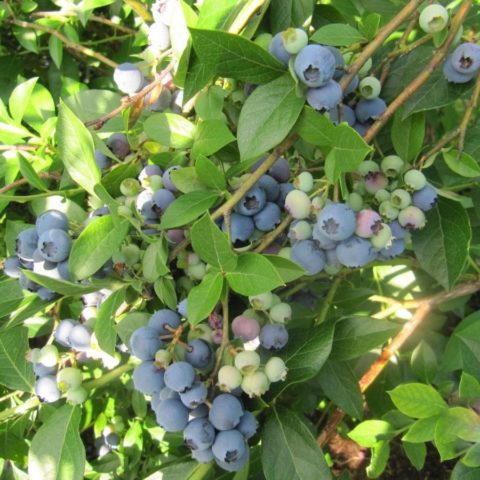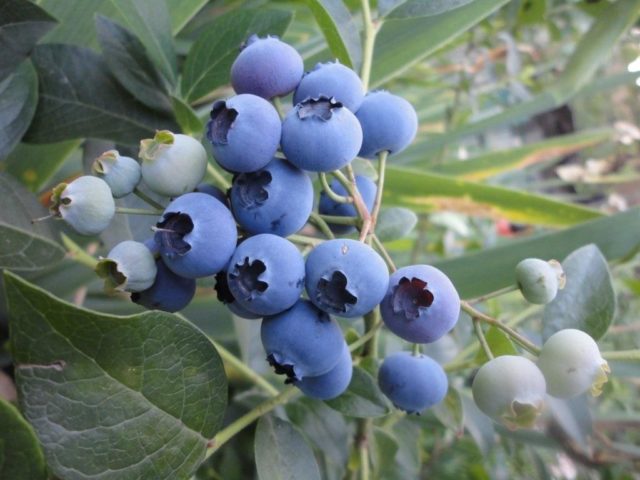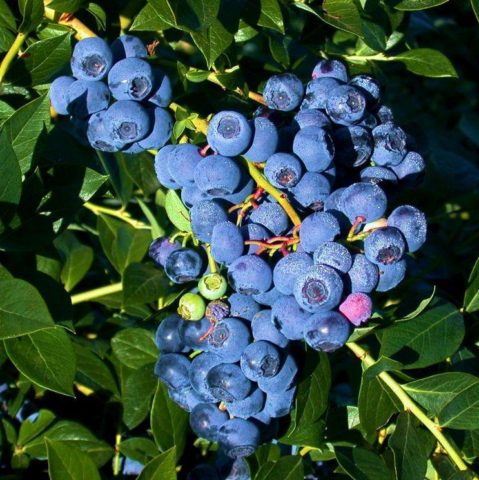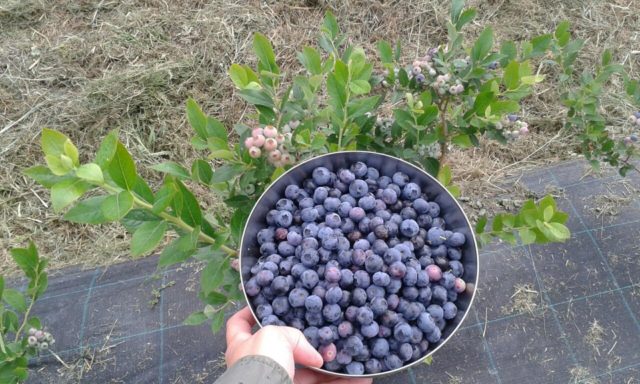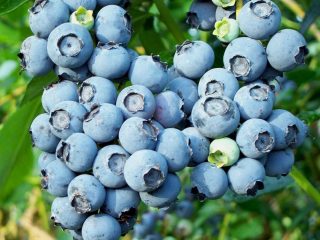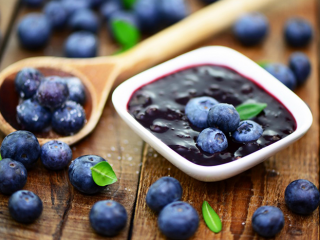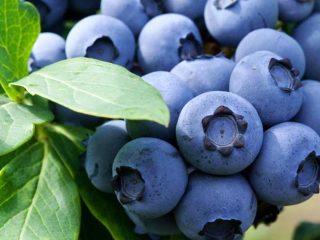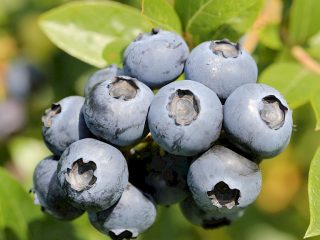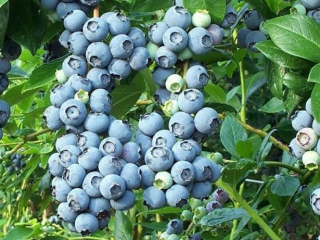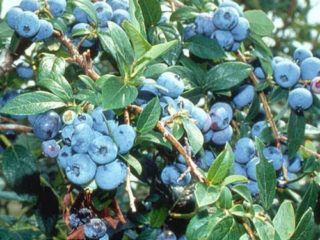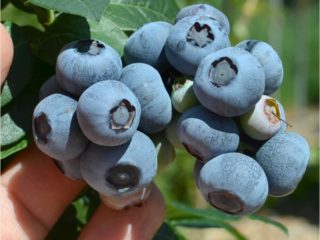Content
Blueberry River was developed in New Zealand in 1986. Breeders used American hybrids in their work. After cross-pollination, new varieties were obtained, one of which was named River. In Russia, blueberries are just gaining popularity among gardeners. The Reka variety is considered promising, but is not yet included in the State Register of the Russian Federation.
Description of the blueberry variety Reka
According to the description, the Reka blueberry is a powerful bush 1.3 - 1.8 m high. Under favorable conditions, the plant reaches 2 m. The width of the bush is from 1.2 to 1.7 m. Its shoots are strong, durable, and erect. The lateral shoots branch, which leads to thickening of the culture. Young stems are greenish and pubescent at the end of the season and become burgundy in color.
The leaves of the Reka blueberry variety are dark green and shiny, located on short petioles. The leaf blade is smooth with veins on top, lighter and slightly pubescent below. The length of the leaves is 65 mm, the width is no more than 40 mm.The decorative properties of the bush are high. In summer, the plant serves for landscaping the area. In autumn the leaves take on a reddish tint.
In the south, the Reka variety blooms in April, in colder climates - in May. Its flowers are numerous, white-pink, bell-shaped. They are collected in brushes of 8-12 pieces. The plant is a honey plant that attracts many bees and other insects.
Blueberry Reka is characterized by high winter hardiness. The branches of the bush do not freeze even when the winter temperature drops to -35 °C. The variety is resistant to high soil moisture and rarely suffers from diseases and pests.
Features of fruiting
The blueberry variety Reka is self-pollinating. However, to obtain a high yield, it is recommended to plant several bushes nearby. A prerequisite is their simultaneous flowering. The best pollinators for the River variety are Northland, Blugold, Duke, Stanley, Ertiblu.
The Reka blueberry variety produces crops early – in mid- and late July. Its berries are medium in size, 15 - 18 mm, weigh 1.8 g. Their color is intense blue, with a grayish coating. The skin is elastic, and the flesh is dense and juicy.
From one bush of the Reka variety, 8 - 10 kg of berries are harvested. These are high figures for blueberries. With age, the productivity of the shrub increases. Blueberries under 3 years old produce up to 4 kg of berries. More than 9 kg of fruits are harvested from a bush older than 5 years.
The ripening of berries is extended over time and ranges from 2.5 to 3 weeks. The harvest is harvested in several stages. Fruits that are completely colored are removed from the branches.The highest quality harvest is obtained in the first and second waves of fruiting.
The tasting qualities of the Reka variety berries are rated at 4.4 points. The taste is pleasant, sweet and sour. Blueberries are used fresh as a dessert, added to breakfast cereals and vitamin cocktails. The berries are dried or frozen for the winter. Jams, jams, and compotes are made from blueberries.
Advantages and disadvantages
Advantages of the River variety:
- early fruiting;
- high productivity;
- excellent quality and taste of fruits;
- increased winter hardiness.
Disadvantages of the River variety:
- develops under certain conditions: acidic soil, good lighting, etc.;
- need for care: watering, fertilizing, pruning.
Features of reproduction
Blueberries are propagated vegetatively. In autumn, the root shoots are separated from the bush. When transplanting a plant, the rhizome is cut into pieces and new seedlings are obtained. To propagate the Reka variety, cuttings are prepared: powerful shoots 15–20 cm long. They are kept in a cool room for a month, after which they are transplanted into a substrate of sand and peat. When the plants take root and grow, they are transferred to the garden bed.
Planting and care
Its further development depends on the correct planting of blueberries of the Reka variety. Be sure to comply with the work deadlines and prepare the planting hole.
Recommended timing
The Reka variety is planted in late autumn before the onset of cold weather. In 2 - 3 weeks the plant will have time to adapt to new conditions. In the middle zone, work is carried out in the spring, in the middle or end of May. By this time the snow melts and the soil warms up.
Site selection and soil preparation
Blueberries prefer sunny areas not exposed to cold winds. Loose, acidic soil is prepared for the crop. The optimal pH level is from 3.8 to 5.A special device is used to measure it.
If the pH level in the area does not correspond to the norm, then begin preparing the soil. First, a hole measuring 1x1 m is dug to a depth of 0.8 - 1 m. Rotted sawdust, wood chips, bark, spruce litter from the forest, and sphagnum moss are used to fill it.
Landing algorithm
The procedure for planting blueberries of the River variety:
- A layer of broken brick or crushed stone 10–15 cm thick is placed at the bottom of the pit.
- The pit is filled with substrate.
- A small ridge is formed above the ground.
- The seedling is placed on top, its roots are covered with soil.
- The plant is watered abundantly.
- The tree trunk circle is mulched with peat or spruce sawdust.
Growing and care
During the growing process, blueberry varieties Reka provide constant care. The bush is watered, fed and shaped.
Watering schedule
According to reviews, Reka blueberry requires moist soil. In this case, constant stagnation of moisture leads to the death of the plant. On average, the crop is watered 1 - 2 times a week, taking into account weather conditions. Watering is especially important during flowering and fruiting. In autumn, moisture is added to a minimum.
Feeding schedule
When choosing fertilizer for Reka blueberries, take into account the acidity of the soil. If this condition is violated, blueberries stop developing and lose productivity. The first sign that the soil needs to be acidified is reddening of the leaves in spring or summer.
Options for acidifying the soil under blueberries:
- nitrogen fertilizers: ammonium nitrate, urea, Nitroammofoska in the amount of 10 g per 1 sq. m;
- ammonium sulfate or potassium sulfate – 15 g per 1 sq. m;
- unused electrolyte for cars – 20 ml per 10 liters of water;
- oxalic acid: 1/5 tsp. for 5 liters of water;
- colloidal sulfur: 30 g per 10 liters of water;
- complex fertilizers for blueberries Florovit, AVA, Good Power - according to the instructions.
Trimming
According to reviews, blueberries of the Reka variety grow quickly. With a large number of shoots, the berries become small and do not have time to ripen. By pruning, the size of the bush and yield are regulated. From the third year after planting, the plant is left with 3 to 5 strongest shoots. The remaining branches are cut off at the root. Dry, broken, frozen shoots are removed annually.
Preparing for winter
Blueberries of the Reka variety are resistant to winter frosts. In late autumn, the bush is hilled up and peat or humus is poured under it. A frame is placed over the young plants and a non-woven fabric is attached to it. In spring, the shelter is removed after the snow melts.
Pests and diseases
The blueberry variety Reka is resistant to diseases and pests. The most dangerous fungal diseases for the crop are: moniliosis, gray rot, white spot. Lesions appear when agricultural practices and high humidity are violated. To combat diseases, Bordeaux mixture and the drugs Topaz and Fundazol are used.
Blueberries attract numerous pests: aphids, scale insects, caterpillars, leaf rollers. The drugs Actellik and Iskra help fight insects. Folk remedies work well: dusting with wood ash, watering with infusion of onion peels. They are used for prevention or when harvesting is imminent.
Conclusion
Blueberry Reka is a promising variety for growing in various regions of Russia. It is valued for its early ripening and abundant fruiting. The berries are rich in vitamins; they are used fresh or for home canning.When growing blueberries, pay attention to the pH level of the soil.
